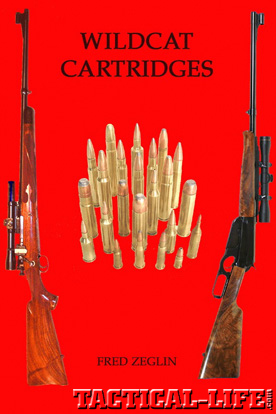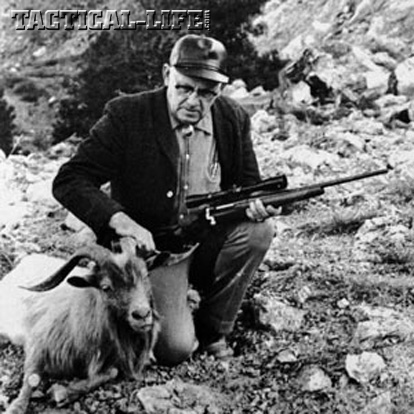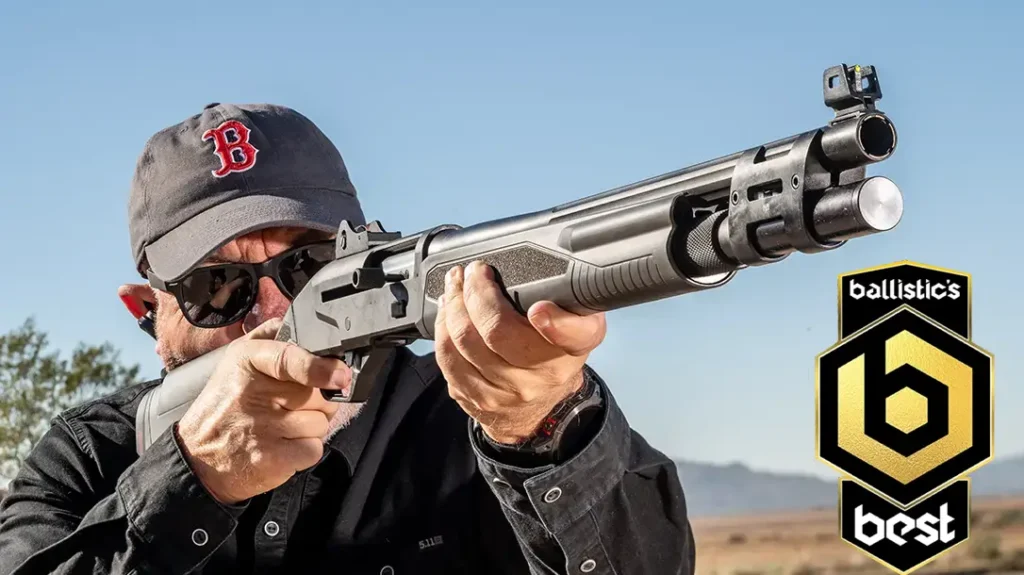People are often remembered as the sum of their life’s work. Such was Parker Otto Ackley, an accomplished gunsmith, educator, ballistician and writer who remained a gentleman in an arena sometimes blessed with blowhards and horse’s necks.
Ackley (1903–1989) was born in Granville, New York, and graduated magna cum laude from Syracuse University in 1927. In 1936 he became a gunsmith in Roseburg, Oregon, and then in 1942 he went to work for Army Ordnance, at Ogden, Utah. In 1945 Ackley established a new shop in Trinidad, Colorado, becoming a highly successful custom gunmaker. He was instrumental in establishing the gunsmith school at Trinidad State, where he taught from 1946 to 1951 and conducted a great deal of scientific experimentation on firearms.
MR. MYTH BUSTER
Advertisement — Continue Reading Below
With a talent for writing and an educator’s patience, Ackley was a great myth-buster, never accepting folklore without first applying his own scientific tests. His experiments sometimes pushed the envelope of propriety, but never of safety. In a scientific quest for hard facts, his myriad “don’t try this at home” experiments tested rifles, actions and ideas to the point of destruction—let the chips and flying gun parts fall where they may. His was a lifelong quest for excellence and firsthand knowledge that may be unequaled to this day. Considering the data produced by his painstaking scientific investigations, Ackley’s career was certainly one of the most productive. When Ackley stated something as fact or cited his own research, you could take that to the bank.
Over a quarter-century, Ackley developed many high-velocity wildcat cartridges and was a leading authority on them—he was sometimes called the “godfather of American ballisticians.” His passion and patience for scientific experimentation were pivotal to his success as a wildcatter. Books have been written, some by him, about Ackley-improved wildcats, which became popular because they were designed to safely extract maximum performance from a caliber, by making improvements to the cartridge that did not entail modification of the weapon mechanism or add functional stress. In most cases, it was unnecessary to modify the rifle besides re-chambering it, and the original ammo could still be used, such as when only factory rounds were available.
PROPELLANT MASTER
Advertisement — Continue Reading Below
Ackley’s improved rounds often featured a case with a sharper shoulder and less taper, making room for more propellant. Although some calibers did not have much room for either improvement or more propellant, in most cases Ackley’s improvements were dramatic. The venerable .30-40 Krag with a 180-grain projectile went from 2,430 feet per second (fps) to a lively 2,900 fps—19.3 percent faster. Because his wildcats were based on such sound research, many rose above their wildcat status to enjoy acceptance worldwide. Ackley improved not only standard cartridges but also other wildcats. He was the first to create a .17 caliber (4.5mm) centerfire cartridge.
He was a highly regarded rifle-barrel maker and custom-rifle builder. His test-to-destruction controlled experiments on rifles and barrels may have been startling, but there was no “hold my beer and watch this” element to his tests. Ackley wanted to know, as a matter of demonstrable fact, why and when a rifle would fail and how to build a rifle so that it would not—and along the way, he wanted to highlight some misconceptions.
Wrong ammo can destroy a rifle—a shorter case can split and bleed high-pressure gas into the action. But if the cartridge seals the chamber, the pressure will go down the barrel, swaging an oversize bullet as it goes. Ackley took a standard .30-06 chamber, enlarged the throat to .35, seated .35-caliber bullets into that .30-06, and fired them through the .30-caliber bore. With standard .30-06 loads, the .35-caliber bullets resized and passed with no signs of excess pressure. However, wrong-dimension brass can let gas escape with dramatic results.
Advertisement — Continue Reading Below
Ackley also tested the ultimate yield strength of various military bolt-action rifle actions by blowing them up with incremental blue-pill loads. Because cheap military suprplus bolt actions were popular for sporting conversions, Ackley thought it germane to see which ones were safe for expected handloads. He did them all—Mosins, Lee-Enfields, M1917 Enfields, Mausers, Springfields and the Japanese Arisaka. The winner, hands down, was the Japanese Type 99 Arisaka.
Army Ordnance repeated the experiment and confirmed his results. The Japanese rifle had a reputation for coming apart in .30-06 conversions. The quick-and-dirty conversion was to “re-chamber” the rifle to .30-06 without setting the barrel back, but by simply reaming out the chamber and modifying the magazine liner to take the longer round. Thousands of these Arisakas were converted from captured Japanese stocks and issued to Korean troops. The bullet was a sloppy fit, but with soft brass it often worked—for a while—because the .30-06 case would simply expand into the oversized part of the old 7.7mm Japanese chamber and seal. However, when the brass split and let gas into the action, it was a boobytrap—but not due to any weakness of the action itself.
Ackley also took opened GI bullet jackets and shoved them halfway down the barrels and fired a regular round through them. Other than slightly ringing the barrel, no adverse effects were noted. Whereas a complete barrel obstruction could cause a rupture, the hollow jackets comprised a tube, so no air could compress between them and the oncoming bullet.
Advertisement — Continue Reading Below
KING OF R&D
Ackley was not only a prolific writer of his multi-volume Handbook for Shooters and Reloaders, which required a monumental body of research, but also a regular contributor to magazines. He was on the technical staff of Guns & Ammo and was the gunsmithing columnist for Shooting Times. He enjoyed a hard-won reputation for always telling it like it is and predicating what he said in print on original, painstaking research. (The operative word here is “original”; he did not take anybody’s word nor pass along thrice-told tales.)
Ackley rifle barrels were in high demand not only for experimental work but also by other custom-rifle makers who proudly offered “barrels by Ackley.” Ackley barrels were also used in the early space program, to simulate impacts from fast-moving space debris. Ackley was probably the leading experimenter (as opposed to advertising proponent) of hypervelocity, though not at the neglect of other projectiles. His research revealed a phenomenon he called “shockdown power,” compared with “knockdown power.” The accepted premise is simply that, as speed increases, shock increases. But Ackley found that beyond the threshold of 4,000 fps, a whole new dynamic is created, which cannot be equaled with lesser speed no matter the mass.
Advertisement — Continue Reading Below
At 30 feet, he fired rounds into the half-inch-thick glacis plate of a GI half-track. The results were astounding: A 100-grain .270 bullet left a shiny spot on the armor plate; two shots from GI .30-06 AP left shallow craters of .070 and .098 inches; and a wee 48-grain .220 Swift bullet consistently burned holes with 0.375-inch diameters completely through the armor. The results spoke for themselves. As a result of shock, the bullet crossed the threshold of hypervelocity, creating a dynamic that cannot be achieved any other way. But does that translate to performance on game animals? Ackley allowed that, if he had to pick only one rifle for hunting North American game, it would be a .220 Swift.


























